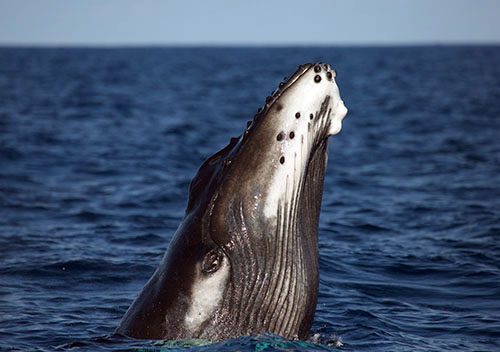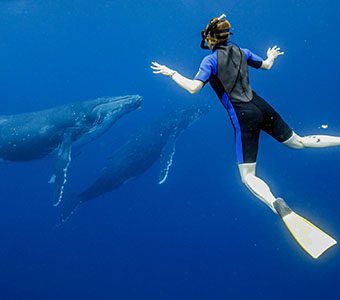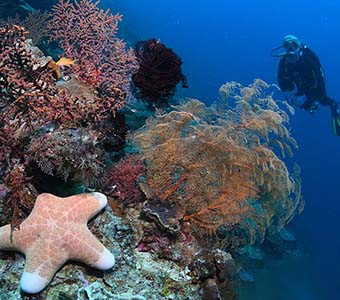Ever wanted to swim with humpback whales? Tonga is one of the few places in the world where, between the months of July and October, you can experience this incredible encounter. Here’s a few fascinating facts about humpbacks that will make you love them even more.
1. Humpback whales are intelligent
Not only are humpback whales intelligent, but they’re also quite vocal. Each population communicates using its own unique dialect – baby whales learn from other whales around them.
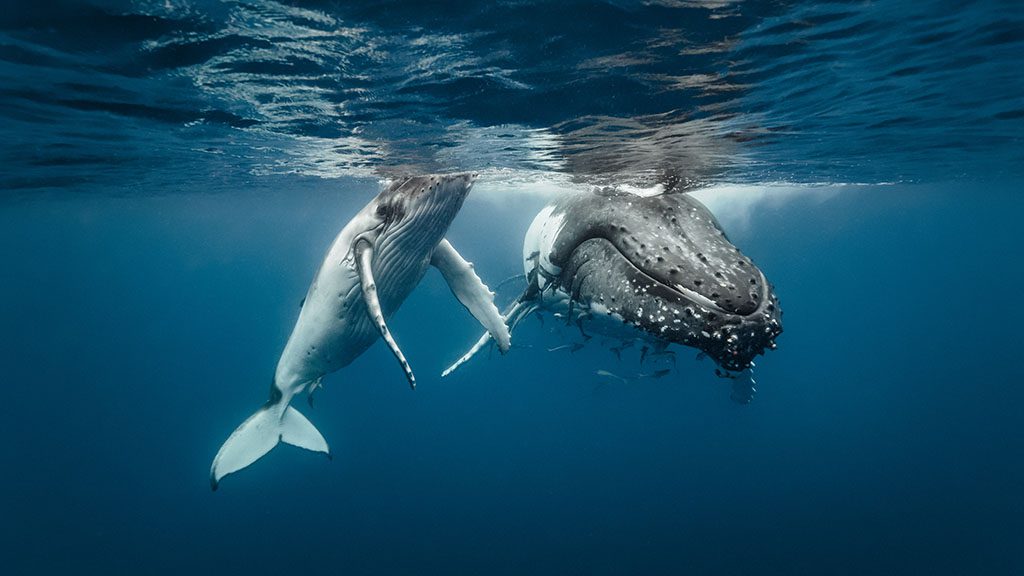
2. Only male whales sing
All humpback whales can make social calls from a young age. But interestingly, it’s only male whales that sing, making these marine giants the ultimate boy band of the sea – their songs can be heard up to 30km away.
3. Whales are… big. (Really.)
Humpback whales weigh as much as 40 tonnes. For perspective, a standard car weighs under 2 tonnes. The flippers are huge as well, making up as much as one-third of their total length. The tail can be a whopping six metres wide.

4. There’s a scientific word for whale tail slaps
The humpback whale’s forceful tail slap has a name of its own: peduncle. It is usually a defensive move, perhaps a female is fending off unwanted male advances. Between mother and calf, scientists suggest this is a humpback whales’ way of sending a little one to the naughty corner.
5. Whales can hold their breath for 40 minutes
You might think you’re a pretty good freediver, but Humpback whales have a highly efficient breathing system that allows them to absorb up to 90 percent of the 200 litres of oxygen they inhale, compared to just 15 percent humans do.

6. Humpback whales are toothless wonders
Humpback whales fall into the baleen whale category, which means that rather than teeth, they have overlapping plates made of keratin (the same substance as human hair) for filtering their food. Humpbacks swallow their food – water and all – expelling what they won’t digest as they go via their baleen. Their diet includes large amounts of krill. It takes quite a lot of krill to make up the amount each whale needs daily – almost 1.5 tons.
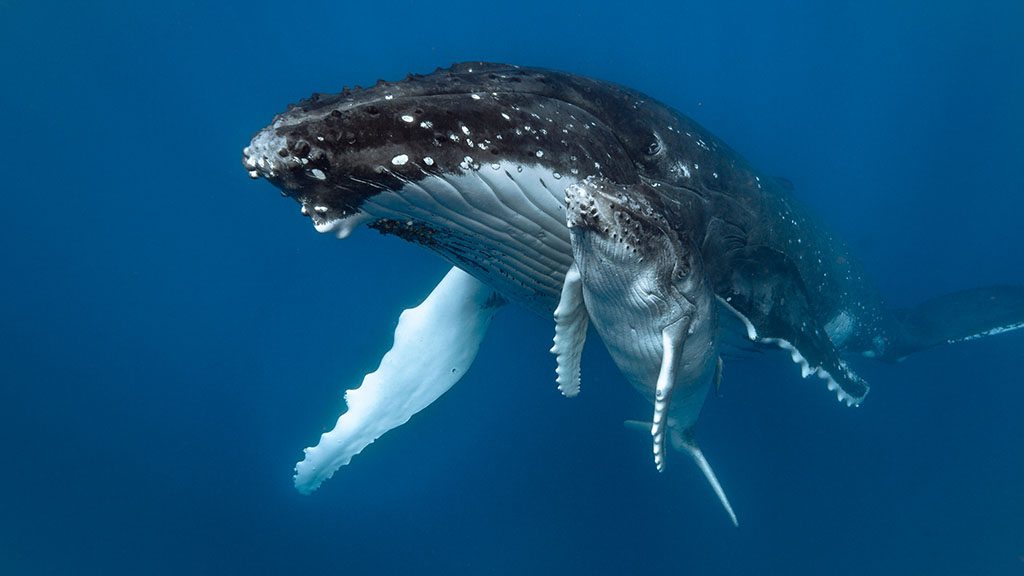
7. Breaching – just for fun or is it back scratching?
Scientists have been studying whales breaching for years, and the jury is out as to why they do it. Some scientists explain breaching as the whales’ means of dislodging barnacles and parasites from their torso, while others suggest it’s just for fun.
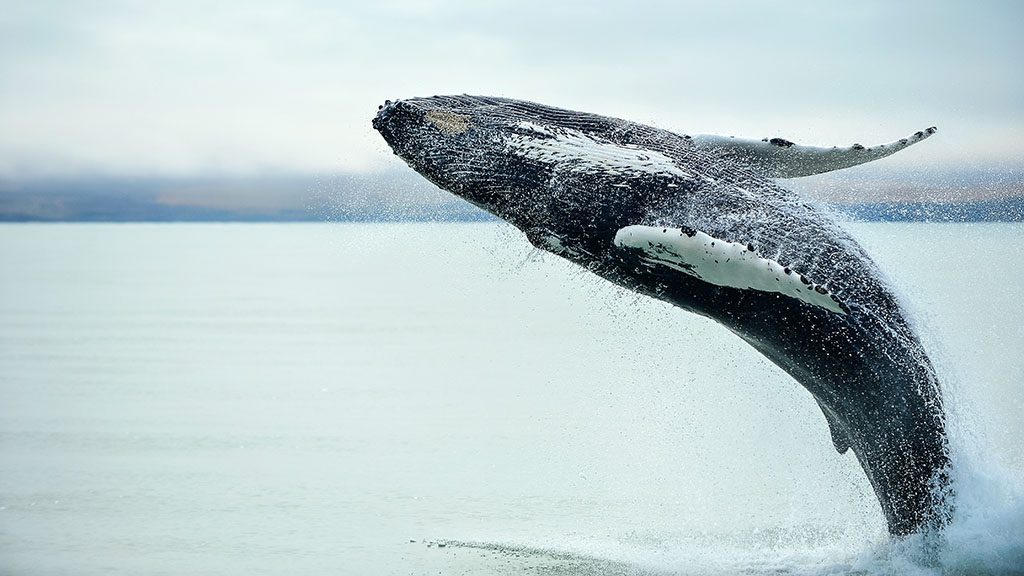
8. They can swim a very long way
Humpback whales have one of the longest migratory journeys of any mammal – they journey around 5,000km, over three months each year.
9. All humpback whale tails are different
Like fingerprints on humans, humpback whales are completely identifiable by the unique markings on their tail fluke. Scientists use these markers to track and research whale migration patterns – and you can contribute too, by uploading your photos to the Tongan Fluke Collective.
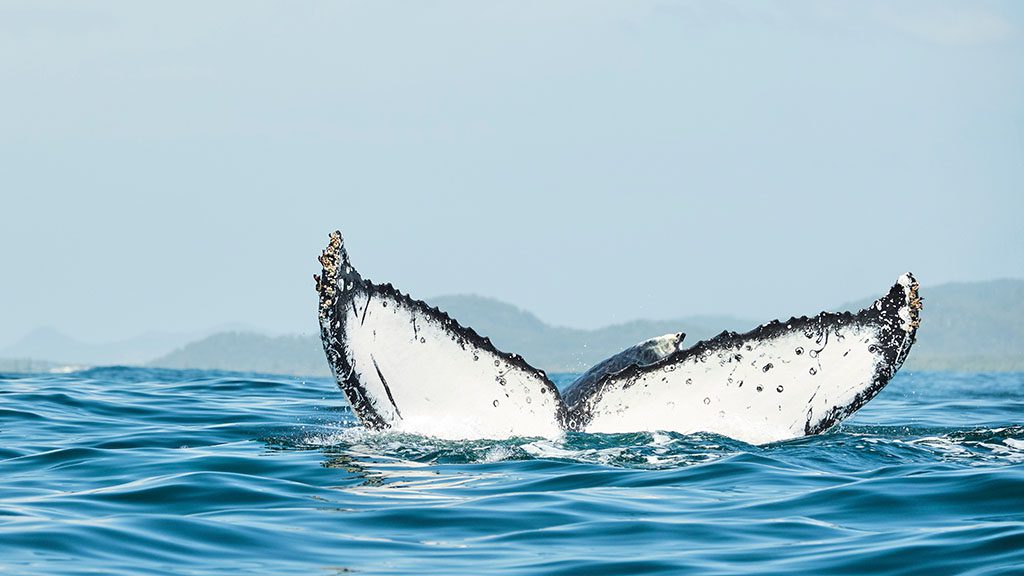
The Tongan population of humpback whales is making a slower recovery from 20th Century whaling compared to other populations in the Southern Hemisphere. Researchers know there is some interchange by whales that visit Tongan waters with other areas in the South Pacific and are also hopeful of building up a better picture of habitat use on the Antarctic feeding grounds. Find out more about the Tongan Fluke Collective here.


